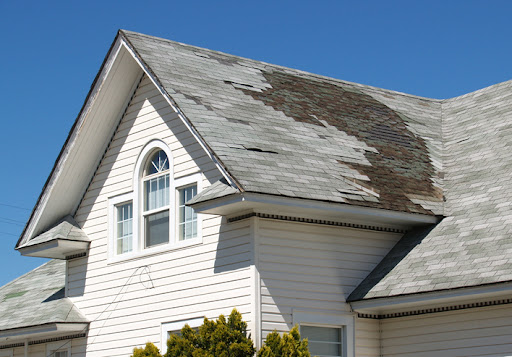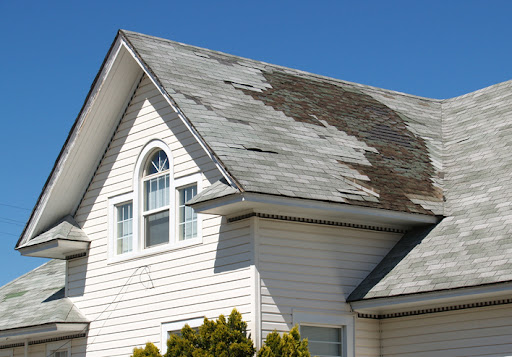
The roof arguably gets the most exposure to the elements compared to other parts of your home. Homeowner’s insurance can help protect this integral component from unforeseen damage. However, homeowners must understand that a home insurance policy doesn’t cover every type of damage that may happen to the roof.
One common question that comes up regularly is, does homeowners insurance cover roof leaks? You might also ask, what about hail and wind damage? We’ll explore each problem in detail in this article.
What Kind of Roof Damage Is Covered by Insurance?
A typical homeowners insurance policy covers the structure’s roof and the cost of replacement if it sustains damage. However, this coverage depends on an important variable: What caused the damage?
Roof Leaks
When you ask the question, “does homeowner’s insurance cover roof leaks,” the answer starts with identifying the cause of the problem. Home insurance covers roof leaks caused by a named peril in your policy, such as fire, wind, or fallen trees.
However, roof leaks that arise from lack of maintenance and general wear and tear aren’t covered by homeowners insurance. Insurance companies also typically deny claims for damage caused by pets, mold, and contractor errors.
Wind Damage
Your home’s roof can take a beating from high wind gusts, which can lift shingles and dislodge the roof’s underlayment and framework. Fortunately, most basic homeowner policies include coverage for wind damage and the ensuing water damage under what’s called dwelling protection coverage. In California, nearly 16% of home insurance claims come from wind and hail damage.
Tree Damage
A standard homeowner’s insurance policy covers most weather-related events, including fallen trees. However, as with other types of insurance, this may depend on what caused the tree to damage your roof or property.
According to the Insurance Information Institute, trees that fell due to named perils like wind, hail, or lightning qualify for coverage, regardless of who owns the tree. Typically, the insurance company will pay for tree removal, roof repairs, and interior damage caused by a fallen tree.
Other Types of Damages
Although standard home insurance typically covers damages caused by named perils, issues arising from other common causes of roof damage are less likely to qualify for coverage. For example, home insurance rarely covers damages caused by poorly maintained and aging roofing materials.
Tips for California Residents Filing a Roof Insurance Claim
If your roof shows signs of damage after a major storm or another event, use these tips to determine whether it might qualify for coverage under your homeowner’s insurance policy.
1. Review Your Policy
Sometimes, the answer to a question like, “does home insurance cover roof leaks,” is in your policy. Before making a claim with your insurance company, take the time to understand your policy by reading the fine print. Learn about your coverages, exclusions, deductibles, and what you need to file a claim.
2. Assess & Document Damages
Document damages by taking photos and noting the date and time of the storm. If you suspect it was severe, contact roof repair experts to assess the extent of the damage. As professional roofers, they can spot any underlying issues you or your insurance adjuster may overlook.
Complete documentation can support your claim by giving your insurer a reliable record of what happened and details about the necessary repair or replacement.
3. Get an Estimate
Typically, a representative from the insurance company will come to your home and assess the damage before issuing a check for repairs. However, a homeowner can also get a supplemental estimate from a contractor that includes damages the insurance company might have overlooked. Keep in mind that most insurance companies will require a line-item estimate, so find out if your roofer can provide one.
4. Be Prompt
Most insurance companies require policyholders to reach out as soon as possible when damage happens. In California, an insurance company has 40 days to accept or reject a claim. An insurer can request additional time to review a claim, but they must provide notification to the policyholder every 30 days.
Once the roof inspection is done and you receive an estimate, contact your provider and file a claim. The insurance company may request the result of a professional roof inspection and the estimated repair cost.
Can My Damage Claim Be Denied?
While some homeowners receive approval and undergo the repair process without a hitch, others may get denied. Here are some of the top reasons why this can happen:
- Lack of appropriate roof maintenance
- Structural issues that existed before you bought the property
- Roof wear and tear
- Previous damages
- Claim filed too late
Because coverage isn’t always straightforward, homeowners must choose a roofing contractor that provides a comprehensive roof warranty. A roof warranty protects against sudden damage that can threaten the structure’s safety. Failing to maintain routine maintenance, regular inspections, or timely repairs can void your roof warranty.
Prevent Roof Damage with Roof Repair Specialist
As you can see, the answer to the question, “does home insurance cover roof leaks,” may not always be clear. Even if you have a policy that covers damages associated with weather-related events, it’s still worthwhile to maintain your roof and have it inspected regularly to avoid claim denials.
At Roof Repair Specialist, we help Southern California homeowners care for their roofs. We’re experts in routine maintenance and timely repairs and offer the industry’s best roof warranties. Reach out today to learn more or schedule a service!





